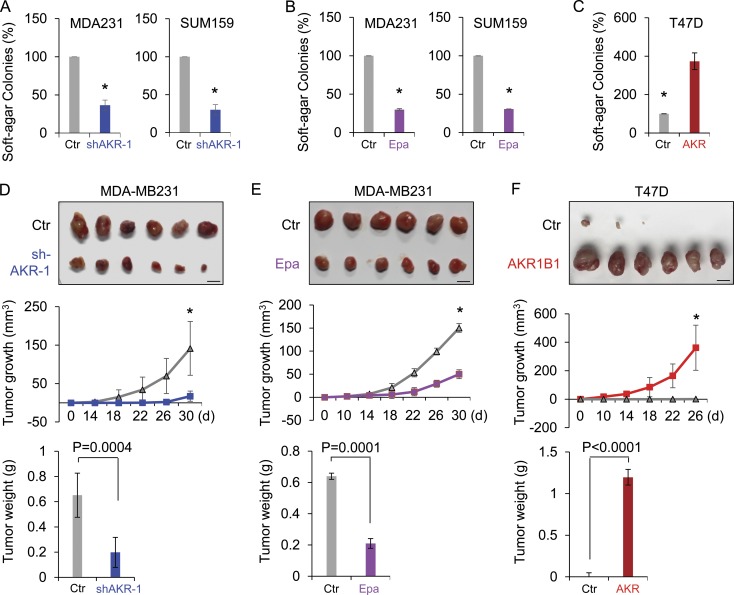Figure 7.
AKR1B1 promotes tumorigenicity in vitro and in vivo. (A–C) The formation of colonies from MDA-MB231 and SUM159 cells with stable empty vector (Ctr) or knockdown of AKR1B1 expression (A) and MDA-MB231 and SUM159 cells treated with or without 20 µM epalrestat (Epa; B), as well as T47D cells with stable empty vector or AKR1B1 expression (C) was measured. Data are presented as a percentage of empty vector cell lines and are mean ± SD in three separate experiments. *, P < 0.01 by Student’s t test. (D–F) MDA-MB231 cells with stable empty vector or knockdown of AKR1B1 expression (D) as well as T47D cells with stable empty vector or AKR1B1 expression (F) were injected into the mammary fat pads of SCID mice. (E) For evaluation of epalrestat, after injection of MDA-MB231 cells on the left flank of every mouse, mice were divided into two groups (six mice per group). After 10 d, two groups of mice were intragastrically treated with 50 mg/kg/d epalrestat or sterile water, respectively. The growth of breast tumors was monitored every 2 d. Tumor size and weight were measured and recorded. Bars, 1 cm. Data are presented as mean ± SEM from six mice. *, P < 0.001.

